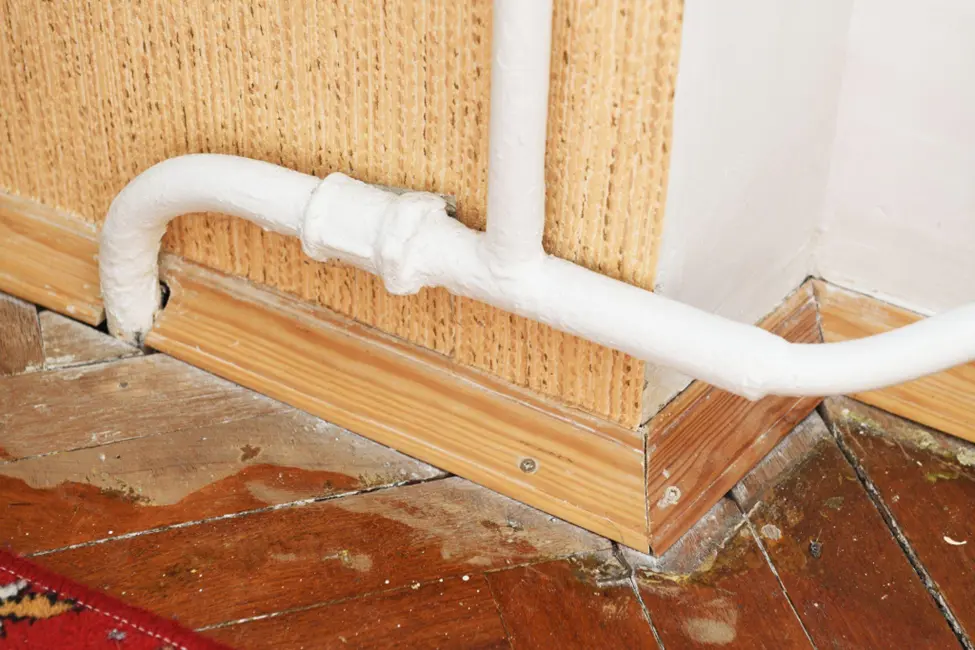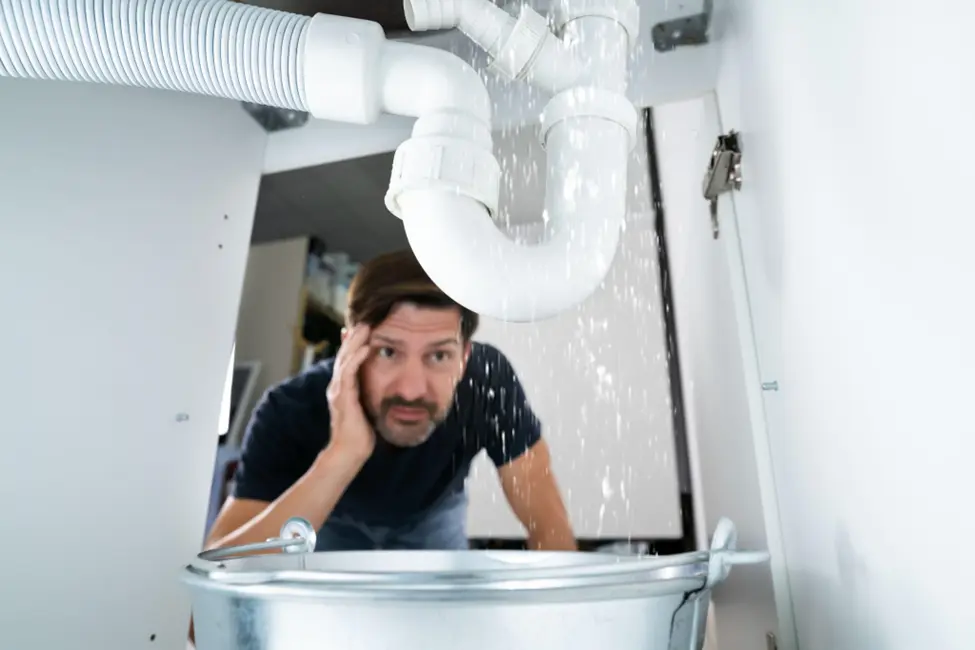Jump to:
Ah, the world of DIY! Who hasn’t been tempted at least once by the idea of rolling up their sleeves and diving headfirst into home improvement? From refurbishing vintage furniture to adding a fresh coat of paint, the sense of accomplishment one gets from doing something with their own two hands is unparalleled.
With the rise of TV shows centered around home renovations, more people than ever are getting inspired. But when it comes to DIY plumbing, there’s more at stake than just aesthetics. A wrong move can not only damage your property but can also put a dent in your homeowners insurance coverage.
The Basics of Homeowners Insurance and Plumbing
What Is Typically Covered?
Delving into the fine print of most standard home insurance policies, it’s clear they come with specific criteria when it comes to covering plumbing. They’ll typically cover “sudden and accidental” plumbing damage.
Picture this: You’re enjoying a quiet evening at home when a pipe suddenly bursts, flooding your space. This unforeseen incident could be a covered loss, meaning your insurance company will likely cover the costs after your deductible.
However, scenarios where a pipe has been silently leaking, causing damage over time, might not be covered. That’s why understanding your homeowners insurance policy is crucial.
The “sudden and Accidental” Clause
The terms “sudden and accidental” play a pivotal role in homeowners insurance coverage. A persistently leaky pipe that’s been ignored? Likely not covered. But a sudden rupture due to cold weather? Now, that’s a different story, especially if you’ve maintained the home’s heating. Neglected to keep the home heated during a vacation, which resulted in a burst pipe? Your insurance company might deny the claim.

Dabbling in Diy Plumbing: What’s at Risk?
Know Your Legal Limits
Every DIY enthusiast should recognize their limitations. Minor tasks, like changing a tap washer or replacing a showerhead, may be permissible for DIY. But remember, regulations differ by location. Places like Queensland (AU) might have a more relaxed stance on certain tasks. Yet, in states like California (USA), due to their strict adherence to safety and quality standards, you’ll often need licensed contractors for extensive plumbing jobs. The message? Ensure you’re clear on local regulations.
The Impact on Your Home Insurance
Should you push these boundaries and your DIY plumbing results in damage, be prepared for potential consequences from your insurance company. An insurance inspection might take place, and if they uncover unauthorized plumbing works, not only might your claim be denied, but your policy could also be at risk of cancellation.

The Financial Implications of Diy Gone Wrong
Delving deeper into DIY plumbing mishaps, it’s not just about water puddles or minor wall damage; the financial repercussions can indeed be hefty. Let’s shed some light on these implications:
Immediate Repair Costs
Imagine taking on a plumbing task, and a slight misjudgment leads to a much more significant issue. Instead of a small repair cost, you’re now shelling out hundreds or even thousands to bring in professionals for damage control — often more than what you would’ve initially paid for their expertise.
Long-Term Damage
While the immediate aftermath of a DIY error is apparent, there could be lurking consequences. For instance, undetected water damage could foster mold growth or even weaken structural elements of your home. Addressing these issues could exponentially inflate repair costs.
Decreased Property Value
A prospective buyer or property assessor will be quick to notice the after-effects of amateur plumbing work. Not only can it decrease your property’s value, but it might also deter potential buyers.
Potential Legal Costs
Let’s not forget the ripple effect. If your DIY endeavor affects a shared pipeline or inadvertently damages a neighbor’s property, you could find yourself on the receiving end of legal claims.

Tips to Safely Undertake Diy Plumbing
Having painted a clear picture of the risks, let’s not discourage every DIY enthusiast out there. With the right approach and knowledge, many DIY plumbing tasks can be accomplished safely and effectively:
Educate Yourself
The importance of preparation cannot be overstated. Arm yourself with knowledge, whether it’s through reliable online resources, how-to guides, or even local DIY workshops tailored for plumbing.
Invest in Quality Tools
Remember, the right tool can make all the difference. Investing in quality plumbing tools will not only make the task more manageable but also ensure a higher degree of precision and safety.
Know when To Call a Pro
Self-awareness is key. Recognizing when a task surpasses your expertise will save both time and money. It’s okay to step back and call in licensed contractors when the task becomes too intricate or risky.
Check Your Insurance Policy
Before diving into any DIY project, give that homeowners insurance policy a thorough read. Understand what’s covered and, more importantly, what’s not. If in doubt, reaching out to an insurance representative can offer clarity.
DIY Wisdom Shared: A Closing Note on Plumbing and Protection
Before embracing DIY plumbing, equip yourself with the necessary information. Always familiarize yourself with your homeowners insurance policy and seek advice where needed. After all, DIY should inspire creativity and possibly even profits, not unforeseen financial challenges

